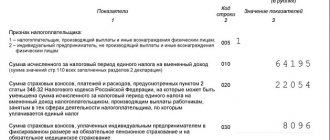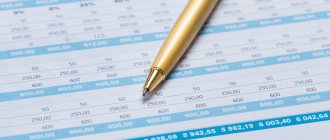Commercial activity is a continuous stream of routine tasks, the solution of which requires high attention and concentration. Situations where cashiers working directly with customers mistakenly pay for goods occur quite often - and in this case, the error should be corrected as quickly as possible. Discrepancies attract the attention of regulatory authorities, which strictly monitor the procedure for maintaining tax base records - various types of responsibility are provided for this. To avoid such troubles, you need to know how to correctly cancel a check at an online cash register, what documents should be filled out, and what the differences are from working with a standard cash register.
General overview
Cancellation is the cancellation of a transaction executed at the time of receipt of funds. The result is the introduction of adjustments to the fiscal statements, confirming the fact of the payment. On standard old-style EKLZ, if the procedure is performed before the actual closing, the cash register registers the deviation and issues a receipt BSO with the appropriate mark, and the canceled amount is not included in the overall cumulative total. If the closing has taken place, the algorithm for canceling a check at the cash register depends on the accompanying circumstances:
- When returning on the day of the operation, the signature of the responsible employee is affixed, a report in the KM-3 form is generated, and the original of the erroneous document is attached.
- If discrepancies are detected after the end of the shift, the fact is reflected in the KM-4 logbook.
It is worth emphasizing that this procedure was relevant for conventional devices equipped with ECLZ. In accordance with legal requirements, businesses are actively switching to an alternative operating format, which involves installing equipment that uploads transaction data in real time.
How can I view punched checks?
Sending checks is done through the data operator. On the OFD website, in the personal account, the seller can view the punched checks for a certain period. The website address is indicated on the punched check. On the website, as a rule, you can track any receipt by entering its data in a special form (fiscal storage number, cash register registration number, etc.). The data is also indicated on the punched check. Likewise, the buyer can track the receipt using the same information.
Receipts are also tracked through the tax office’s “Cash Receipt Check” application. This is a mobile application.
How to cancel a check at a cash register
The introduction of accounting mechanics, which allows the tax office to control the reflection of cash receipts, in practice has significantly simplified the interaction between entrepreneurs and departmental bodies. However, you now need to track mistakes made much more carefully than before. Timely self-correction excludes fines and other sanctions only if the business entity has taken all possible and mandatory measures - both to correct it and to notify the inspectorate in cases where this is prescribed by law.
General terms
Cancellation and annulment of a return check or receipt at an online cash register is an operation that can be performed before it actually breaks. The software used in modern cash register systems allows adjustments to be made until the document is printed by the fiscal registrar and the data on it is uploaded to the accounting system by the OFD operator. However, when the procedure is already completed, the use of methods that were relevant for ECLZ is not possible. Changes made to Federal Law No. 54, which regulates the use of cash registers, provide for the use of a special correction check generated between the beginning and end of a work shift, or on another day - the law does not contain requirements regarding the original and correction dates.
There are two calculation features that are contained in such adjusting statements:
- Correction of receipt, implying that an entity conducting business activities records previously unaccounted revenue that arose as a result of an erroneous indication of the amount or failure to complete an accounting transaction.
- Expense adjustment, in which corrections are made to the fiscal documentation confirming the disbursement of funds and due to the initial withdrawal of less than the required amount.
Canceled checks can be generated at the initiative of the taxpayer - in situations where an error is identified through one’s own efforts. A prerequisite is to indicate the date and number of the accounting document serving as the basis for making changes. For example, an explanatory note drawn up by a cashier can be considered in a similar capacity. The type of operation - “independent” or “as prescribed” - is indicated during the registration process.
There is another type of technical procedure, determined by the specifics of the prevailing circumstances. To correct calculations in the presence of the client, you need to know how to cancel and cancel a punched check at the ATOL online cash register - to correct it with the “return of receipt” sign in the cash register, you need to generate a new document containing the fiscal details of the erroneous receipt. This will essentially cancel the first version, after which all that remains is to issue the correct payment documentation and transfer it to the buyer.
We've taken the Z-report, what's next?
The printed check with the final report must be pinned or glued to the “Cashier-operator’s certificate-report”. The following information is entered into the cash register as a separate line:
- date of each document;
- his number;
- gross total (sum at the beginning and at the end of the shift);
- amounts of sales, returns, discounts, etc.
Together with the recorded revenue, the cash register at the end of the shift (working day) is handed over to the senior cashier, to the accounting department or personally to the manager (depending on how this is established by the internal procedure of the organization).
The collected Z-reports, as well as used EKLZ, must be stored for at least 5 years; the manager is responsible for the timing and safety.
IMPORTANT! Take care of these documents, do not lose or throw away the taken Z-reports, even if they were carried out by a foreman when setting up the cash register, contain zero indicators, or were taken as a test. Absolutely all canceled reports must be recorded in a journal.
Common causes of errors
Quite often, the inattention of cashiers leads to the formation of surpluses or shortages caused by:
- Incorrect choice of payment method.
- Incorrect indication of the cost of goods.
You also need to take into account the likelihood of technical failures associated with power outages or software malfunctions.
When the buyer contacts the seller with the intention of returning the purchased item, he will need to issue a return receipt - the same as in the case of an inaccuracy with the final amount. If there is no information about the transaction in the cash register accounting database, and the final reconciliation of the planned and actual amounts of funds reveals a discrepancy, a correction document is used. Only two days are allotted for changes, so it is not recommended to put the correction on the back burner.
How to avoid mistakes
Competent training and timely certification of personnel, drawing up detailed and visual instructions for working with cash register systems, as well as explaining responsibilities and possible consequences are the minimum set of tasks that every entrepreneur should take care of. Employees must know how to return and cancel a check at a cash register, what a cancellation is, and how to make a cancellation at an online cash register, the principles of working with which are noticeably different from the usual ECLs.
In addition, it would be useful to take care of mobile automation. The number of routine operations performed by employees every day reduces concentration, which often becomes the cause of errors in mutual settlements. The solutions offered make it possible to reduce the effort and time costs associated with maintaining commodity accounting and document flow at enterprises in almost all industries.
Mandatory application
Almost all organizations and individual entrepreneurs in commercial activities are required to use online cash registers. Information about the transactions performed goes to the OFD center (fiscal data operator), and from there the information is transferred to the Federal Tax Service. Those. If mistakes are made, then the tax office receives inaccurate information and the situation must be corrected promptly.
Only a cash register included in a special register can be used, the same with fiscal drives and OFD. The use of other equipment is equivalent to not using the cash register. The penalties for violating the operation of cash register systems are quite impressive:
- The cash register is incorrectly registered or does not comply with the requirements of Article 4 of Federal Law No. 54 of May 22, 2003. From a simple warning to a fine for a legal entity from 5 to 10 thousand rubles, for an official - from 1.5 to 3 thousand (clause 4, article 14.5).
- Outdated technology is used or is not used at all in the required cases. Those. either you continue to use a cash register, which, for example, does not have a modern fiscal drive, does not transmit data to the Federal Tax Service, or there is a cash register, but it is not always used.
Fine for an organization - from 75% to 100% of the amount of checks (minimum - 30 thousand rubles) + administrative fine for officials - from 25% to 50% of the amount (minimum - 10 thousand rubles).
There are settlement participants who can do without an online cash register or who have received a deferment.
Creating a return document
For registration, you will need an explanatory note written by the responsible employee, or an application received from the buyer.
When drawing up a document on the day of sale, or after a short period of time, a simple algorithm is used: it is enough to issue a check with the sign “return of receipt” containing the details of the canceled primary form and the amount of the transaction. The form is transferred to the client along with cash, while the goods are returned to the balance of the outlet.
If a bank card was used for payment, cancellation is first initiated through the terminal, after which the document is issued in an identical way. In this case, the bank is responsible for transferring money to the buyer. It is important to consider that this function is not implemented on all cash registers - it is worth clarifying this point in the accompanying instructions for the equipment.
Incorrect cash register receipt - basis for correction
All people make mistakes, but only those who never work make mistakes.
Cashiers working with online cash registers have not been spared the same common practice. To understand the algorithm for correcting an erroneously punched check, you need to refer to the provisions of the law “On the use of cash register equipment (KKT/KKM) when making cash payments and (or) payments using payment cards” dated May 22, 2003 No. 54-FZ. Changes in calculations that have already been made will require their correction or refund. For this purpose, separate online cash register operations with the same names are provided, accompanied by the production of special documents - a correction check or a receipt return check.
Therefore, the answer to the question: “How to issue an erroneously punched check” is this: it is necessary to carry out an operation to correct previously made calculations or return the receipt.
Important! The correction scheme using a correction check is acceptable when the user uses fiscal document formats version 1.1. When using version 1.05, to correct an error in the form of an incorrectly generated cash receipt, the correction check is not applied, but a check with the calculation attribute “return of receipt” is used (letter of the Federal Tax Service dated 08/06/2018 No. ED-4-20 / [email protected] ).
You will have to adjust your online cash register calculations if you have:
- errors that resulted in excess amounts being processed at the cash register;
- inaccuracies that influenced the occurrence of shortages.
Next, we will explain why it is necessary to correct errors in online checkout calculations.
Creating a correction check
It is carried out on the basis of an order officially issued by the tax service, or in the presence of an official act, which indicates the number, date and circumstances that served as the reason for the formation. As a rule, the reason is the failure to use the cash register at the time of settlement with the client. First, you need to determine which format of fiscal data will be relevant - the information is contained in the report on the opening of the shift, in the section “FFD CCP”. The field can contain values of 0, 2 or 3, which determine the current release of the software being used.
Algorithm for versions 1.0 or 1.05
You will need to draw up an act with a serial number reflecting a complete list of transactions that were not properly documented. The date, cost, product name and quantity of goods, as well as the reason why the cash register was not used, must be indicated. For the correction check, the appropriate attribute is selected, as well as the details of the basis, including in cases where it is an order to eliminate offenses drawn up by the tax inspectorate.
Release FDF 1.1
The difference from previous algorithms comes down to the need to enter additional information:
- Names of the service or work performed.
- Characteristics of a fiscal document.
Can I make a copy of the check?
A copy of a punched check can be made within 30 days after its issue, using the OFD personal account or retrieving information from the cash register memory. Such a copy will be a duplicate of the check, which, as a rule, lacks some of the optional details (for example, advertising).
Legally, the duplicate extracted from the OFD personal account has greater “weight”. Many operators provide sellers with the opportunity to install additional software in their personal account. Using it, you can set up printing of two copies of a document at once when the cashier is working on a cash register. The software provides the ability to print duplicates for past periods.
There is an error in the check
Situations when the primary documentation contains erroneous data are also quite common. Let's consider the main possible options for such circumstances.
A larger amount has been broken than necessary
Usually occurs as a result of entering into a document a larger number of commodity items than are actually sold, and, as a result, leads to the appearance of excess funds in the cash register. The biggest problem in this case is the potential risk of a complaint from a customer who may suspect deliberate deception on the part of the outlet. The business’s task is to promptly identify discrepancies and notify the Federal Tax Service of the mistake. Moreover, if the demand is not received, you should generate and punch two checks with the “return of receipt” sign, leaving the money in the proceeds.
The amount charged was less than the purchase price
The likelihood that the buyer will notice a discrepancy and independently return to the store to cover the resulting difference is much less in this case - although practice shows that there are quite a lot of conscientious people. In such situations, similar corrective documents are drawn up, but their failure leads to an actual shortage in the cash register, which the guilty employee will have to compensate for.
In general, the procedure for covering the difference depends on the internal policy of the enterprise - it is also possible to write off goods if the resulting shortage does not cause significant damage to the organization. However, the manifestation of loyalty to personnel should be based on a combination of factors - systematic shortages and surpluses may well indicate not a lack of qualifications, but deliberate fraud.
Payment was made in cash, when a cashless payment option was needed
This is a common situation, the culprits of which may be both the cashier and the client himself, but greater responsibility rests with the employee who issued the confirmation receipt before receiving the funds. At the same time, the fiscal data operator has already transmitted information about the receipt of payment, which is at odds with the actual situation. Duplication does not help, since it leads to double recording of the transaction, and, as a result, to a cash gap. The situation can be corrected by generating a document with the “receipt return” attribute, which means canceling the check at the online cash desks of MTS, ATOL and others. After this, a new version is created containing the correct form of payment - non-cash payment.
Types of errors
Conventionally, errors in working with online cash registers can be divided into registration, technical, settlement and others. Registration, respectively, is associated with incorrect registration, untimely change of data, unreliability, etc. Technical – with CCP setup, data in the system. Settlement - allowed in amounts, names of goods, unpunched checks or, conversely, punched unnecessarily. Other – all the rest, for example, untimely replacement of the fiscal drive.
Now let's look at common situations and options for correcting them.
Registration and changes
Most often they forget to make corrections to the cash register card, in particular to the cash register location. The device itself is transported, installed at a new point and begins to work, but they don’t bother to report this to the Federal Tax Service, and as you already know, one of the required details of the check is the address of the place of payment.
Important! Instead of the usual address during distribution trade, information about the car is indicated.
Until the cash register card is brought in accordance with the actual data, you cannot use the cash register, because the information will be unreliable. You can check the data in your personal account on the tax service website.
Another mistake is that the cash register is not deregistered when a separate division is closed. If the device is sent for long-term conservation (longer than the validity period of the fiscal drive) or will not be used at all (for example, the cash register will be sold as unnecessary), then it is necessary to submit an application for deregistration.
If the device is temporarily sent to a warehouse or office, but will not be used, then it is permissible to make changes and indicate the storage location. Do not forget that if at the time the cash register is turned off, some documents have not been transferred to the OFD, then after 30 days the drive will be blocked. You can check the shipment by printing out the shift closure receipt, which indicates the number of documents not submitted to the OFD. If the value is “0”, then everything is fine.
Individual entrepreneurs who are exempt from using online cash registers forget to buy a cash register and register it when they hire an employee. The law gives entrepreneurs 30 days. Purchasing equipment at the end of the term is risky, because the registration itself takes up to 5 days.
Settings
The most common situations when they do not indicate:
- Name of product. As a rule, modern cash registers interact with trade accounting programs or connect to a cloud service; stand-alone cash register models also work - they either have a built-in program or access a virtual “warehouse”. If there are no appropriate settings, the cashier enters the name independently.
- Cashier's name. It is typical for small businesses to have a high staff turnover and no one is in a hurry to make changes to the settings. When checking, the Federal Tax Service inspector will probably compare the name on the check and the identity of the cashier who punched it.
Federal Tax Service inspectors emphasize that nominal names like “do not comply with the requirements of the law and are reflected as an error during automated control in the Federal Tax Service. The exceptions I indicated above are individual entrepreneurs who apply special tax regimes.
Simply indicating the job title is a mistake. Changing the information is not difficult: just study the instructions for the cash register, and if difficulties arise, contact the cash register service center. The administrator or manager - the person responsible for changing the data - should have access to such settings so that there is no abuse by employees.
Note! It is not necessary to indicate the cashier's full name when purchasing online, when the buyer pays by card or other non-cash method, the receipt is generated and sent automatically, and a specific cashier is not involved in its preparation.
You need to pay close attention to the initial setup of the tax system. When changing the aid of navigation, follow the recommendations of the cash register manufacturer or service center. To make payments using different modes, two departments are usually set up, for example, one for UTII, the second for the simplified tax system.
Use without necessity
When online cash registers just began to enter our lives, the most incredible interpretations of the law appeared, even inspectors gave dubious answers to questions about the use of cash registers.
A few years later, the myths have been dispelled, but some contradictions remain, and it is worth remembering when the use of a cash register is not required:
- When making calculations within the framework of sub-accounting, as well as when paying salaries (surprisingly, in some places on forums similar questions still pop up).
If the accountable person buys goods or pays for services, work on behalf of the organization with a card or cash and it is necessary to receive an invoice or invoice specifically for an individual entrepreneur or LLC, then you need to issue a check indicating the required details (clause 6.1, article 4.7 of law 54-FZ) . The representative himself must have a power of attorney. It will be required to receive the goods and sign documents.
Particular difficulty with corporate cards linked to an account. The supplier's cashier does not see what kind of card they are presenting to him until the client reports his status, but the buyer-taxpayer then has problems accounting for expenses and closing the report. That is why some suppliers require the presentation of a power of attorney to make payments, and it is recommended that purchasing organizations set out the procedure for using corporate cards in their internal regulations.
- When paying for services, work, rent under GPC agreements concluded with individuals. In 2022, some punched checks for such transactions, thanks to a well-known interview with a tax inspector. Later, official explanations from the Federal Tax Service of the exact opposite direction appeared, and the inspector’s opinion was called private.
- When netting between legal entities and individual entrepreneurs. This statement gives rise to different opinions. For example, in the Letter of the Federal Tax Service dated August 21, 2019 No. AS-4-20/ [email protected] a position was expressed on the non-use of cash registers, and in the Letter of the Federal Tax Service for Moscow dated August 16, 2019. No. 17-26/2/ [email protected] - the opposite point of view.
I am inclined to the point of view that there is no such obligation, because the exceptions (clause 9 of Article 2 of Law 54-FZ) indicate cases when the application is mandatory: when paying in cash or cards with their presentation. Considering that with mutual offset there is clearly neither one nor the other, it can most likely be classified as a non-cash transaction.
Non-use
A more dangerous situation arises when an online cash register is not used. As a result, there is a chance to receive a substantial fine (you remember that it is calculated on the basis of the outstanding amount).
Let's consider situations in which a check is sometimes not punched, although it should be formed:
- When paying by card. Until now, some cashiers believe that it is enough to swipe the card through the acquiring terminal and issue a slip. If you find receipts to your account, but these amounts have not been posted through the cash register, you need to urgently correct the situation.
What to do: after the opening of the next shift and before closing, punch a correction check with the sign “arrival”, in the description indicate the date and type of violation, the type of correction “independent”. Please note that for now you need to send an explanatory note to the Federal Tax Service - through your personal account, the reporting operator or by mail. Then you actually “turn yourself in” and get the opportunity to avoid a fine.
Important! On March 31, 2022, in the first reading, the State Duma adopted a bill on the removal of an administrative fine from a violator if he sent a correction check, and the inspectorate did not know about the violation at that time. Those. If amendments to the Code of Administrative Offenses are adopted, then there will be no need to send an additional explanatory note.
- When returning an item. Sometimes sellers get lost and don’t know what to do in a “non-standard” situation. In fact, the steps are simple: we take the buyer’s application for return, pick up the goods (if possible, a cash receipt, but its presentation is not necessary, the Consumer Rights Protection Service takes the buyer’s side in such a situation), punch the check with the sign “return of receipt” and hand it over to the buyer along with a return receipt or invoice (if necessary) and money.
The main thing is that the product must be returned according to the law! For example, medications cannot be returned.
Proceed in a similar way when replacing one product with another - first make a return, and then order a new product as usual.
- When working in a special mode. Individual entrepreneurs suffer from this everywhere; it seems to them that if they use, for example, UTII, then it is not necessary to set up a cash register. And indeed, a number of entrepreneurs, we have already talked about this, do not have to use online cash registers, but in most cases this depends not on the tax regime, but on the availability of employees and the type of activity.
It is clear that the only solution to the problem is to buy a cash register, but what about the revenue that was not previously shown? Some use a correction check to reflect it, others use a regular receipt, and others do nothing. And it’s hard to say, I admit, whose approach is more correct.
- Upon receipt of payment from individuals to the bank account. To solve the problem, there are two options: organize the sending of electronic documents using an automated system, or track them “manually” and punch them at the checkout after receiving a bank statement (clause 5.4 of Article 1.2 of Law 54-FZ). Failed payments are corrected using the same correction check.
- Upon receipt of payment by corporate card or cash from a legal entity. Despite the fact that both parties in the calculations are legal entities or individual entrepreneurs, it is necessary to apply the CCP. Don't forget about additional details. If the client came to you later (he realized that he paid with an organization card) and asked to issue documents, then you will have to make an adjustment. Moreover, it is better to do this through a return. We carry out a “return of receipts”, return the money, and then punch the correct check with the correct details. Without a certificate, delivery note and invoice, the client could not process either goods or services (work), so let him accept them for accounting in the current period.
- When there is a power outage. Buyers are issued BSO or sales receipts. This is completely wrong. Trade must be stopped. If, after all, the funds were deposited into the cash register, then correct it with a correction check with the sign “receipt” and attach an explanatory note or carry out a receipt transaction as soon as the full amount of receipts is cleared.
But you can work without the Internet for a long time, the main thing is to make sure that when you connect to the network, the checks end up in the OFD (I remind you to look at the line “No fiscal documents transferred” when closing a shift).
Error when issuing funds
Most often occurs in activities related to the provision of services, for example, acceptance of secondary raw materials and scrap metal, recycling, etc. It can also occur in retail outlets, the activities of which combine not only sales, but also additional services, which is typical for stores household appliances and digital devices. In some cases, service maintenance involves not only repairs under warranty, but also the purchase of old samples and models for spare parts - and this implies mutual settlements with visitors, which should also be reflected through accounting equipment.
The algorithm looks like this: Let’s say a client brought a monitor worth 8,000 rubles for sale, but the cashier made a mistake and struck 10,000, giving out exactly that amount of money. Correcting an operation involves sequentially generating with the attribute “expense return” and an amount of ten thousand, receiving from the sender the difference between the declared and actual value, as well as generating a new expense document indicating the correct cost value.
Correcting input errors at the online checkout
The responsible person must print a receipt with one of the following characteristics:
- “Incoming” - when there is a surplus of cash balance, when the cash register was not used during mutual settlements.
- “Expense” - in case of issuing money without a cash register.
- “Return of receipt” - when registering a corresponding operation, as well as when re-issuing a fiscal document with incorrect data.
- “Refund of expenses” - when receiving funds without using a cash register.
Technically, the process depends on the equipment model - for example, ATOL uses the following sequence:
- pressing “X” a specified number of times (5 for incoming, 6 for outgoing);
- “BB” - before and after entering the correction amount;
- confirmation of the procedure with the “IT” button.
It is worth noting that when it is not possible to use CCP for correction, corrections are also carried out through the driver, in a forced manner.
Why doesn't the online cash register see the SIM card?
This situation can arise for a number of reasons. If the online cash register does not recognize the SIM card, follow a series of steps:
- check if the SIM card is working properly and installed correctly in the device;
- if the card is working properly and installed correctly, but there is no connection, contact the support of your telecom operator;
- check the serviceability of the CCP (dust, moisture, or mechanical damage to the contacts);
- If mechanical damage is detected or if there are no external obstacles to the operation of the online cash register, but the cash register cannot be set up, you must contact technical support.
On a note! Frequently changing the SIM card can damage the contacts.
Informing tax structures
The operation can be carried out by the entrepreneur independently or according to an order issued by employees of the Federal Tax Service. In the latter case, the legislation allows both to get by with a warning and to impose an administrative fine for failure to use the online cash register. If there were several precedents, a correction check is created for each of them. In addition, the cashier must write a note explaining the reasons that led to the violation. It indicates the name of the enterprise, actual address, date, nomenclature name of the product or service, quantity and cost.
How to make an advance payment at the online cash register?
An advance payment at the online cash register is made by selecting the “Advance” payment attribute. When receiving an advance, if the exact list of goods, their price, and quantity are unknown, you may not indicate this data in the advance receipt. When making the final payment for the goods (taking into account the previously received advance payment), all its details are indicated in accordance with Federal Law No. 54, Art. 4.7. The amount of payment upon final settlement is fixed in the amount actually received, without advance payment. It does not matter whether the final payment was received in cash or by card.
If, when receiving an advance payment, the goods on the list, their quantity, price, value were already indicated, then this data does not need to be entered again during the final calculation. On the contrary, if the data was not entered in the check for the advance payment, they must be indicated in the check for the final payment (according to the text of the letter of the Ministry of Finance No. 03-01-15/26352 dated 04/28/17).








